Healthcare App Data Standards- All You Need To Know Before Healthcare App Development
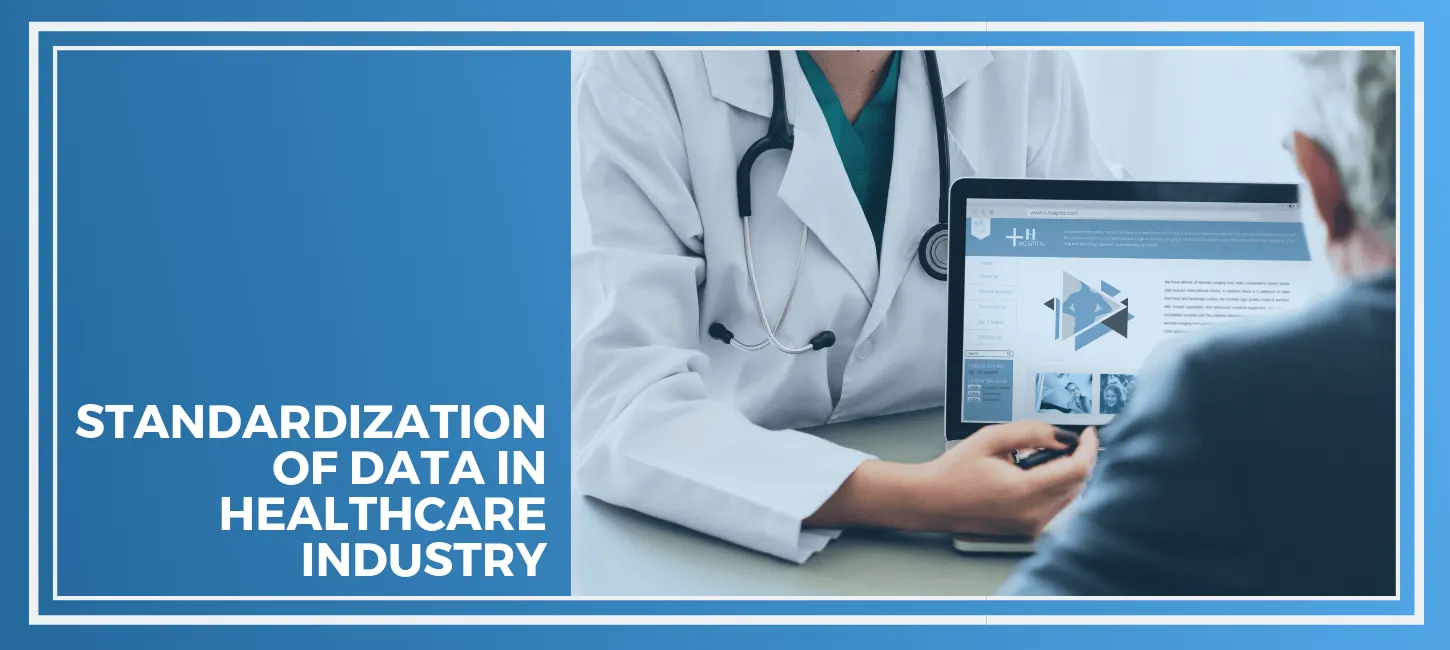
Consider the following scenarios-
Scenario 1:
A young adult meets with an accident on the highway. People gather around him and soon they find that he is unconscious and someone from his family needs to be informed about him. They immediately call for the ambulance and start searching for his wallet and phone contacts to get to someone in his family.
Now, sadly the man had not saved the ICE number in his contact list which made it difficult for the people trying to help him.
(For your information, the ICE number stands for- in case of emergency contact number. This standard is known to all and it makes it easy to get in touch with that close friend or family member who needs to be informed about you in an emergency situation.)
Anyway, within an hour they could get to his brother and narrated him the incident.
Scenario 2:
The other day I was having a WhatsApp conversation with my friend living in the Netherlands and it was indeed nostalgic to talk about the summer vacations spent together during our college days. We decided to catch up on WhatsApp video call at 7 PM and on that note we typed goodbye.
Both of us kept waiting to see each other after a long time (though on a video call) but we didn’t get connected at 7.
After coming over the dejection of a broken friendship, I realized that my friend was not unfaithful but we both missed on the time-zone. 7 PM for me in Indian Standard Time (IST) and 7 PM for her in the Central European Standard Time (CET) was not the same.
We anyway rescheduled, decided on our standard for time-zone and caught up on video call anyway. True friendship sees no barriers.
In both the above situations, what we learn is that Standardization of data and communication is critically important to convey the rightly intended message.
When it comes to the healthcare industry, accurate communication about products ordered, shipped, and received throughout the healthcare supply chain is essential for complying with the healthcare app data standards.
Our life depends on the quality of medical treatment, equipment, and products. Ranging from a small bandage or a surgical tape, medicines, to the most advanced electromagnetic equipment used in hospitals, all of these fall under the category of healthcare products.
With healthcare mobile apps being introduced in nearly all healthcare aspects, there has never been more need for implying these rules and regulations than now.
But, what if there were no healthcare app data standards? How safe & effective would medical services be?
When you are sick or injured, these are the last things you want to worry about. But, without international standards that would be a little tricky because standards provide internationally agreed guidelines & specifications to ensure things work.
Hospitals are complex organizations and they must function productively in order to allow medical professionals to carry out their activity in the best possible conditions. Like any other facility, hospitals have to be environmentally friendly, energy-efficient, socially responsible, and a safe place for professionals and patients.
Healthcare app data standards ensure that your surgeon’s operating tools work when you need them the most. Standards also keep bugs stave off by making sure that everything is properly standardized. They make sure that the medical devices & tools are effective, that medical labels are clear, and that your laboratory tests are performed correctly.
To ensure accuracy and efficiency in the delivery from the manufacturer to the patient – all the parties involved in the healthcare supply chain need to exchange certain business information.
What is this Exchange of Information in healthcare app data standards?
__________
Let us understand how a patient’s health record has to deal with various healthcare departments and several stakeholders during his medical treatment.
In a hospital, a patient is undertaking a treatment under two specialist doctors, who visit him at different times in a day. He is constantly taken care of by two medical assistants (nurses) one of which is always by his side.
Now, while Shift-time changes, one nurse hands-over the patient’s day records, improvements, and medications to the other one. And similarly, the next morning, the data is handed back to the first nurse.
Often patient’s reports have to be accessed by and through the hospital laboratory and pharmacy.
While one doctor visits the patient, he notes some changes in his prescription and daily report and that report is passed over the second specialist when he comes to visit the patient.
Post-treatment, the patient consults other clinics, physiotherapists, and local pharmacies where there’s again a chance of data-redundancy.
This way the critical data of the patient is moving on casually amongst different departments in the same hospital, that too handwritten.
Hand-written data is highly prone to mistakes and errors. Can you imagine what major emergencies can arise due to such casual conduct?
Manual systems and processes are unable to efficiently cope with the changes in demand of healthcare but to automate these processes all stakeholders need to communicate with the same standards and data so they can identify and share product information accurately and quickly.
Thus, emerged the Electronic Healthcare Record EHR data system which now records each and every single piece of patient’s information on digital systems. This makes the data less prone to human errors.
Apart from this, there still hovers the risk to data redundancy as the patient’s records are transferred to various departments and thus amongst several stakeholders of medical products. Hence came in the concept of ‘Interoperability’ in healthcare app data standards.
You might be wondering what is Interoperability?
__________
The Health Information and Management Systems Society (HIMSS), defined interoperability. Interoperability is when two or more systems can reliably exchange electronic health information and use that exchanged information.
It means that various healthcare systems should be able to exchange internal data and present it in a way that it should be understandable.
To achieve such healthcare interoperability, the paper-based records have to be changed to Electronic Health Records (EHR), which in turn requires Standardization.
A standardized supply chain can help reduce unnecessary costs from incorrect delivery, invoice errors, obsolete stock, and other problems that occur too frequently in hospital processes.
Get the Essential Feature List of Electronic Health Records App right now!
But wait! Who creates these healthcare app data standards?
The Standards Development Organizations (SDO) thus took the initiative to create industry-specific standards. SDOs are supported by members who are healthcare providers and they are often accredited by the American National Standards Institute (ANSI).
SDOs work with its members who conduct 3 meetings in a year where they develop new standards and maintain the existing ones.
Let’s have a look at the most importantly practiced IT healthcare app data standards and understand their intentions.
1. X12 EDI
X12 is a standards development organization (SDO) approved by the American National Standards Institute (ANSI) and it is known as Accredited Standards Committee.
EDI stands for Electronic Data Interchange and X12 EDI is a standard especially given for the healthcare data exchange amongst various businesses via their computers. It mostly includes the exchange of business documents like order invoices and payment receipts.
X12 is just a sequential designator assigned by ANSI and these standards are made for several other industries as well. By far, this standard is the most prevalent in the United States and looking to its reliability by the businesses, this one is sure to stay for years to come.
2. DICOM – Digital Imaging and Communications in Medicine

This healthcare app data standard stands for Digital Imaging and Communication in Medicine for effective management and transmission of medical images and related data.
DICOM was developed by the National Electrical Manufacturers Associations (NEMA) and the American College of Radiology (ACR). Using this standard ensures interoperability of systems using medical images, mostly fields such as cardiology, radiology, obstetrics, oncology, and dentistry.
DICOM can represent more than one-dimensional images which help the medical facilities to diagnose the patient’s condition accurately. Other advantages of using this standard are that it just takes a few seconds to develop the images, keeps the images and patient data together even while transmission, allows a zoomed-in view into the image, and enables editing like brightness and contrast options as well.
3. NCPDP – National Council for Prescription Drug Programs
The National Council for Prescription Drug Programs is a standards development organization (SDO) which has its origins in the origins in the US and is accredited by ANSI. It was founded in 1977 as an extension of a Drug Ad Hoc Committee of US.
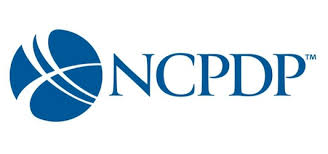
Most of the NCPDP members are from the pharmacy sector and they have created various healthcare app data standards for communication, rebating, telecommunication, and electronic prescribing amongst the pharmacy industry.
This SDO has been named in the US federal legislative for several Acts namely the Health Insurance and Portability and Accounting Act (HIPAA), the Medicare Prescription Drug, Improvement, and Modernization Act.
4. NCPDP Script
The NCPDP Script standard was passed in 1997 to enable data transactions between pharmacies, prescribers, intermediaries, payers, and facilities in electronic medium i.e computer-to-computer.
This healthcare app data standards supports all the prescription transactions including new prescriptions, prescription cancellations, prescription changes, fill notifications, refill requests, authorization exchanges, medication history and more.
The Institute of Medicine had recommended that all the pharmacies and prescribers include
Electronic prescribing by 2010. This has been immensely advantageous for patients as it avoids the inaccuracy of handwritten prescription, decreases the risk of medication errors and oral miscommunications, improves drug surveillance, automates the prescription renewal requests, enhances overall medication management process, and allows greater prescriber mobility.
With the data standards, check out the trend taking over the Healthcare industry!
5. NCPDP HIPAA – Health Insurance Portability and Accountability Act
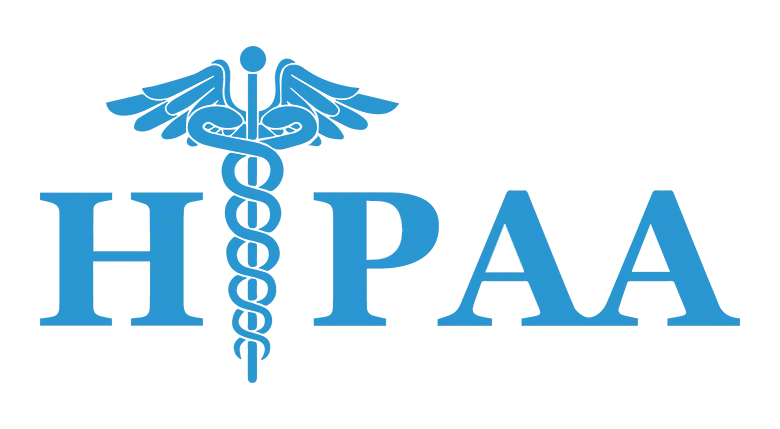
The Health Insurance Portability and Accountability Act passed in 1996, is the United States legislation that ensures data privacy and security of medical information.
The main purpose of passing the HIPAA act was to provide health insurance cover for employees who left or changed jobs and to standardize the electronic transmission of admin and financial transactions so that costs and burdens can be reduced.
The Act contains 5 healthcare app data standards under it:
1- HIPAA Health Insurance Reform
2- HIPAA Administrative Simplification
3- HIPAA Tax-Related Health Provisions
4- Enforcement & Application of Group Health Plan Requirements and
5- Revenue Offsets
The HIPAA is most beneficial to the patients as it protects sensitive personal and health information.
6. LOINC – Logical Observation Identifiers Names and Codes
Logical Observation Identifiers Names and Codes (LOINC) is a standard universally accepted for classifying medical laboratory observations.
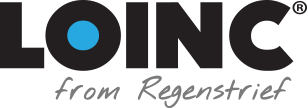
LOINC was first developed in 1994 by the Regenstrief Institute which is a non-profit medical organization of US. However, in 1999 HL7 Standards Development Organization chose LOINC as a preferred code set for laboratory test names in data exchanges between healthcare facilities, laboratories, laboratory test names, laboratory test devices, and public health authorities. This standard for healthcare app is now supported by the American Clinical Laboratory associations and the College of American Pathologists.
The LOINC database includes medical laboratory code names, nursing diagnosis, nursing interventions, outcome classifications, and patient care data sets.
The LOINC code is a 6 digit standard with the last digit separated by a hyphen(-). For eg. 52063-5 is the LOINC code for prescription of durable medical equipment. Here the 6 fields of LOINC code are for the component, kind of property, time aspect, system, type of method, and the type of scale.
7. HL7 – Health Level 7
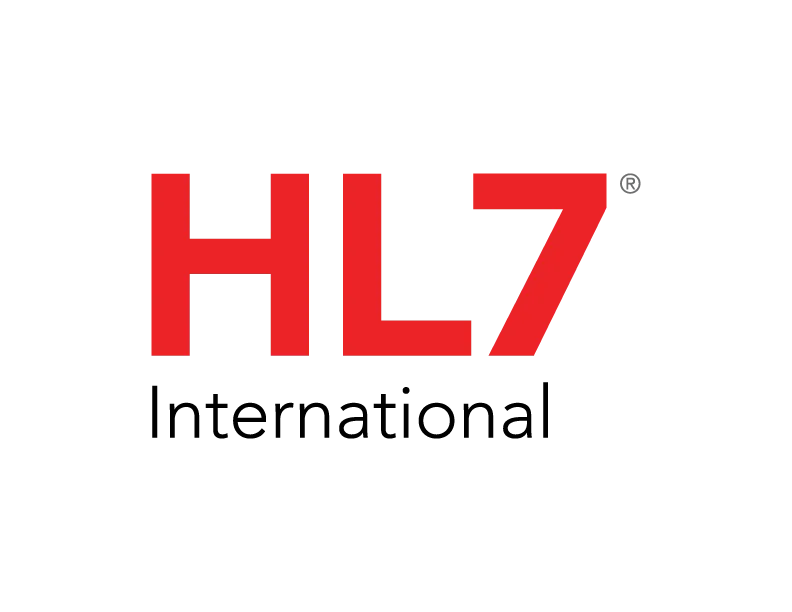
Health Level 7 comprises a range of the most commonly used standards in the healthcare domain over 20 countries in the world. HL7 is based on the International Standard Organization (ISO’s)- Open Standards Interface (OSI) model and it works on the 7th layer i.e the Application layer of the model.
HL7 provides the format for healthcare data exchange in the form of message packages to be transmitted via computer systems. These healthcare app data standards are grouped into several reference categories such as Primary, Clinical and Administrative Domains, EHR Profiles, Implementation Guides, Rules and References, and Education and Awareness.
Here are some of the HL7 standards explained:
i) HL7 CDA
Clinical Document Architecture is a data standard for healthcare app developed by HL7 to ensure that certain formats used in hospitals and medical transactions like discharge summaries, progress notes, etc are standardized. This is an XML based markup standard to specify the encoding, structuring, and semantics of the electronic data exchange.
To specify the full semantics of a clinical document, HL7 CDA defines these 6 characteristics:
Persistence
Stewardship
Potential for authentication
Context
Wholeness
Human readability
The CDA standard is certified by the American National Standards Institute (ANSI).
ii) HL7 ELINCS
ELINCS stands for EHR-Lab Interoperability and Connectivity Standard. As the name suggests this is a standard for transmitting reports/results from the Laboratory Information Systems (LIS) to Electronic Health Records (EHR) system.
The ELINC standard solves the application layer problem of the electronic laboratory results. This healthcare app data standard works to normalize and simplify laboratory results for the physicians to grasp easily; after all the lab data is highly crucial in the patient’s care and treatment.
iii) HL7 CCOW
Clinical Context Object Workgroup (CCOW) is an interoperability specification for the visual integration of user applications. It shares the user and patient real-time data at the user-interface level and secures the transaction using a CCOW vault-system.
In the context of health informatics, CCOW is an HL7 data standard for healthcare protocol and it works for both client-server and web-based applications. This enables applications to function in a context-aware state, making a prominent place for ‘Context Management’.
Context Management is the process of virtually linking disparate applications using particular subjects of interest such as user, patient, clinical encounter, charge item, etc. so that the end-user sees them operate in a unified manner.
iv) HQMF
HL7 has developed a standards-based representation of quality measures as electronic documents, which is known as Health Quality Measure Format (HQMF). The HQMF document is written in XML (Extensible Markup Language) and is based on the HL7 Reference Information Model (RIM) describing how to compute quality measures while patient treatment.
HQMF header contains meta-data such as author, measure-ID, measure period, type of measure score- like ratio, proportion, a continuous variable, etc. Whereas, the body contains population criteria and data criteria such as supplement data and risk adjustment variables.
v) QRDA
The HL7 CDA provides a healthcare app data standard to report the patient’s data using several quality measures and it is known as Quality Document Reporting Architecture.
A QRDA document is a specific kind of CDA (Clinical Data Architecture) document tailored for quality report. QRDA comes in two forms:
Category 1: Patient-Level Reporting→ is used to convey performance data for the care of a single patient. This document contains clinical information about the patient and reference numbers for relevant Electronic Clinical Quality Measures (ECQM). This enables the receiver of the QRDA document to analyze the data according to the ECQM.
Category 2: Population-Level Reporting→ is used to report quality data for the care of a population of patients. It reports the counts of patients in each population used in the calculations along with promoting interoperability measures and /or improvement activities.
8. CCR – Continuity of Care Record
Continuity of Care Record is a health record standard jointly developed by 5 institutional bodies namely ASTM International, the American Academy of Pediatrics (AAP), the Massachusetts Medical Society (MMS), the American Academy of Family Physicians (AAFP), the Healthcare Information and Management Systems Society (HIMSS), and other health informatics vendors. CCR creates electronic summaries of a patient’s health and is intended to minimalize medical errors.
This data standard for healthcare app was developed with the intention of data transmissions amongst various healthcare professionals involved in a patient’s care. The CCR data set contains a patient’s health information such as problems, allergies, medications, health insurance information, care plan, etc.
9. SNOMED – Systematized Nomenclature of Medicine
Systematized Nomenclature of Medicine is a standardized vocabulary of clinical terms in multiple languages. It contains more than 300,000 terms including body structures, clinical findings, biological products, geographical locations, etc and an individual number is associated with each medical concept and several concepts can be presented together by these numbers.
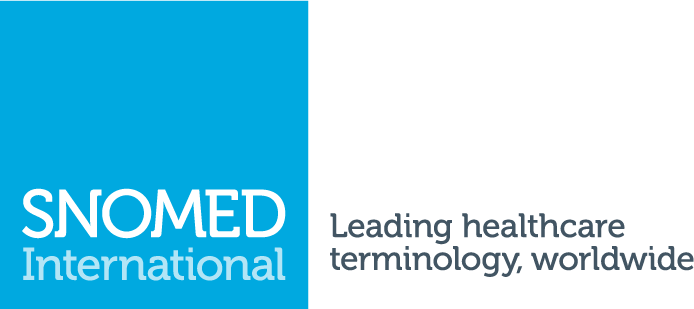
This numerical representation reduces chances of errors and it facilitates electronic data exchange amongst various healthcare systems.
SNOMED was originally developed by the College of America’s Pathologists and England’s National Health Services and it is now under the influence of International Health Terminology Standards Development Organization (IHTSDO)
Conclusion
tandardization assures that medical equipment works according to its intention, that you are in safe hands and that the whole community gets the level of quality care that they deserve.
Healthcare app data standards use cutting-edge Risk Management technique for better healthcare. Their objective is to avoid undecided damages to patients that do supervene and also to reduce the costs of longer treatment.
Yes, data standards do contribute to making the work of healthcare professionals more effective & easy. They are instrumental for the efficiency of the healthcare system to reduce costs and extend the reach of public health systems with available resources.
Follow Us On

